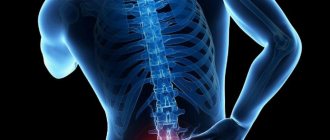Fast Facts About NSAIDs
- Many drugs from this group are dispensed without a doctor's prescription, since in general NSAIDs are safe provided they are used in strict accordance with the instructions that manufacturers supply with the package.
- NSAIDs are preferably used to relieve spasms, aches and pain. In addition, they are prescribed in cases where pain is accompanied by fever or swelling.
- There are certain risks that may be associated with people who regularly take NSAIDs for pain.
What are NSAIDs?
Inflammation is the body's immune system's response to infection or injury. Increased temperature, redness, swelling and pain are all characteristic signs of the inflammatory process.
NSAIDs include a number of popular drugs such as aspirin or ibuprofen
The body receives pain signals from nerve receptors located in places where inflammation develops. These signals are the result of complex reactions and interactions between cells and chemicals in the body.
Anti-inflammatory drugs accomplish their goal of relieving pain in part by reducing inflammation. People may use these medications to relieve pain, stiffness, swelling, and fever.
Nonsteroidal anti-inflammatory drugs reduce the direct effects of inflammation on painful nerve stimulation and sensation, but also affect swelling and increased body temperature.
When NSAIDs are contraindicated
It should be understood that even the strongest NSAIDs are not a cure for the underlying disease (for example, if they are taken for headaches caused by hypertension). They help reduce the intensity of the inflammatory process, alleviate or completely eliminate pain for a certain time, but do not affect the pathological processes that caused the pain syndrome.
Each NSAID is accompanied by instructions that introduce the indications and contraindications for taking the drug, and also indicate the compatibility of various drug groups and possible side effects. It is very important to read this information carefully before you start taking any medicine, including NSAIDs. Pay special attention to the state of the gastrointestinal tract; in case of diseases of the digestive system, drugs in this group should be taken with caution and only after consultation with a doctor.
How do NSAIDs work?
NSAIDs are a broad group of drugs from several classes. Despite the fact that these drugs differ from each other in chemical structure, they have similar effects on the body, which include the following:
- reduction of high body temperature;
- reducing the degree of inflammation;
- pain relief.
NSAIDs reduce the rate of formation of compounds called prostaglandins. Prostaglandins play an important role in the body's inflammatory response. Reducing the amount of prostaglandins produced as a result of tissue damage reduces the degree of inflammation.
NSAIDs block the enzyme cyclooxygenase or COX. This enzyme promotes the reaction that produces prostaglandins.
Blocking COX also affects platelets, blood cells that are involved in the clotting process. This is why NSAIDs interfere with blood clotting.
In the case of aspirin, this property helps prevent blockages in the arteries that lead to a heart attack or stroke.
List of new generation non-steroidal anti-inflammatory drugs
Non-steroidal anti-inflammatory drugs (NSAIDs, NSAIDs) are new generation medications that have anti-inflammatory, antipyretic and analgesic effects. Their mechanism of action is based on blocking certain enzymes (cyclooxygenase, COX), which are responsible for the formation of prostaglandins - chemicals that promote pain, fever, and inflammation.
The word “non-steroidal” in the name of these drugs indicates the fact that medications in this group are not artificial analogues of steroid hormones - powerful anti-inflammatory hormonal drugs. The most popular representatives of NSAIDs are Diclofenac and ibuprofen .
What do NSAIDs treat?
NSAIDs are often used to eliminate or relieve back pain
NSAIDs are used to treat three symptoms common to a wide range of medical conditions.
- High body temperature or fever.
- Inflammation.
- Pain.
NSAIDs are used to relieve pain for the following problems:
- arthritis;
- back pain, especially with long-term lower back pain;
- cold or flu;
- headache;
- menstrual pain;
- damage to joints and bones, sprain or dislocation.
- pain in joints and muscles;
- toothache.
In low doses, aspirin is used to prevent artery disease that can lead to heart attack or stroke. This drug may also be used to reduce the risk of developing certain types of colorectal cancer.
Headache and back pain are the two main reasons for using NSAIDs. If these problems become chronic, the patient should consider the safety of nonsteroidal anti-inflammatory drugs.
Use of NSAIDs to treat colds and flu
For over a hundred years, humanity has been using NSAIDs to treat cold symptoms. However, it should be understood that drugs from this group do not destroy the virus and do not change the course of the disease. They simply reduce some symptoms, such as fever and pain.
A systematic scientific review of a number of studies conducted to provide evidence of the benefits of NSAIDs in treating the common cold found that these drugs are most effective in treating headaches, earaches, and muscle and joint pain.
Side effects of NSAIDs
Stomach upset may be a side effect of NSAIDs
Nonsteroidal anti-inflammatory drugs may cause side effects.
Severe side effects are much less common than mild ones. In addition, the likelihood of their development varies from person to person. People who take high doses of drugs and do so for a long period of time are usually at greatest risk.
Prescription drugs generally provide greater pain relief than over-the-counter drugs, but they are also associated with an increased risk of unwanted complications.
Less serious side effects that may occur in some people include:
- nausea;
- vomit;
- diarrhea;
- constipation;
- loss of appetite;
- rash;
- headache;
- dizziness;
- drowsiness.
Rare negative consequences of taking NSAIDs include the following:
- accumulation of water in the body;
- kidney problems (up to kidney failure);
- liver problems (up to liver failure);
- problems with the heart and circulatory system;
- prolonged bleeding after injury or surgical procedures.
NSAIDs may increase blood pressure. They reduce blood flow to the kidneys, causing these organs to work less productively, which in turn leads to the accumulation of water in the body. If there is more fluid in the bloodstream, blood pressure increases. In the long term, it can cause kidney damage.
In addition, the use of NSAIDs slightly increases the risk of heart attack and stroke, unless we are talking about taking low doses of aspirin.
Peptic ulcers and bleeding in the gastrointestinal tract
Long-term use of NSAIDs or use of such drugs in high doses can also lead to the formation of ulcers in the digestive tract, more commonly known as peptic ulcers.
NSAIDs weaken the action of prostaglandins, which reduces inflammation. However, prostaglandins protect the stomach lining because they help produce mucus. Therefore, NSAIDs leave the stomach less protected from the aggressive environment of gastric acid.
People who take NSAIDs for a long time or in high doses should talk to their doctor about ulcer prevention measures. One such measure is to take medications that reduce the production of gastric juice. The second is using other types of painkillers.
Non-steroidal anti-inflammatory drugs: list of NSAIDs for the treatment of joints
Let's consider the most effective and well-known NSAIDs that are used to treat joints and other diseases when an antipyretic and anti-inflammatory effect is required:
- Ibuprofen; Indomethacin; Meloxicam; Naproxen; Celecoxib; Diclofenac; Etodolac; Ketoprofen.
Some medications are weaker, not so aggressive, some are designed for acute arthrosis, if emergency intervention is necessary in order to stop dangerous processes in the body.
The main advantage of new generation NSAIDs
Side effects are observed during prolonged use of NSAIDs (for example, during the treatment of osteochondrosis) and consist of damage to the intestinal and gastric mucosa with the formation of bleeding and ulcers . This disadvantage of non-selective NSAIDs was the reason for the creation of a new generation of drugs that block only COX-2 (an inflammatory enzyme) and do not affect the function of COX-1 (a defense enzyme).
That is, new generation drugs have almost no ulcerogenic side effects (damage to the mucous membrane of the digestive system) associated with prolonged use of non-selective NSAIDs, but they increase the chance of thrombotic complications.
The only disadvantage of the new generation of drugs is their high cost, which makes them inaccessible to most people.
What are new generation NSAIDs?
inhibit COX-2 to a greater extent , while COX-1 remains almost unaffected. This is what can explain the rather high effectiveness of the drug in combination with a minimum of side effects.
List of effective and popular new generation anti-inflammatory non-steroidal drugs:
- Xefocam. A medicine that is based on Lornoxicam. Its characteristic feature is the fact that the drug has an increased ability to relieve pain. In terms of this indicator, it is similar to morphine, but at the same time it does not create addiction and does not have an opiate-like effect on the central nervous system. Movalis. It has an antipyretic, well-defined anti-inflammatory and analgesic effect. The main advantage of this drug is that with constant medical supervision it can be used for quite a long time. Meloxicam is produced in the form of a solution for intramuscular injections, in ointments, suppositories and tablets. The tablets of the drug are quite convenient in that they have a long-lasting effect, and it is enough to use one tablet throughout the day. Nimesulide. It is successfully used to treat arthritis, vertebrogenic pain in the back, etc. Normalizes temperature, relieves hyperemia and inflammation. Taking the drug quickly leads to improved mobility and reduced pain. It is also used in the form of an ointment for application to the problem area. Celecoxib. This drug significantly alleviates the patient’s condition with arthrosis, osteochondrosis and other diseases, effectively fights inflammation and perfectly relieves pain. Side effects on the digestive system from the drug are minimal or completely absent.
In cases where long-term use of anti-inflammatory non-steroidal drugs is not necessary, then older generation drugs are used. However, sometimes this is simply a necessary measure, since not all people can afford a course of treatment with these drugs.
Classification of NSAIDs
Based on their chemical origin, these drugs come in non-acidic and acidic derivatives.
- Preparations based on indoacetic acid - sulindac, etodolac, indomethacin; Oxicams – meloxicam, piroxicam; Salicipates – diflunisal, aspirin; Based on propionic acid – ibuprofen, ketoprofen; Pyrazolidines – phenylbutazone, metamizole sodium, analgin; Phenylacetic acid preparations – aceclofenac, diclofenac.
At the same time, non-steroidal drugs differ in intensity and type of action - anti-inflammatory, analgesic, combined.
Based on the strength of the anti-inflammatory effect of average doses, the drugs are arranged in the following order (the strongest ones are on top):
According to the analgesic effect, the drugs are arranged in the following order:
- Ketoprofen; Ketorolac; Indomethacin; Diclofenac sodium; Amidopyrine; Flurbiprofen; Naproxen; Piroxicam; Aspirin; Ibuprofen.
Most often, the NSAID drugs listed above are used for chronic and acute diseases that are accompanied by inflammation and pain. As a rule, non-steroidal anti-inflammatory drugs are used to treat joints and relieve pain: injuries, arthrosis, arthritis, etc.
NSAIDs are often used for pain relief for migraines and headaches, renal colic, postoperative pain, dysmenorrhea, etc. Due to their inhibitory effect on the synthesis of prostaglandins, these drugs also have an antipyretic effect.
Dosage selection
Any medicine new to the patient should be prescribed initially in a minimal dose. , the daily dose is increased after a few days .
Therapeutic dosages of NSAIDs are in a wide range, while recently there has been a tendency to increase single and daily doses of drugs that are well tolerated (ibuprofen, naproxen), while maintaining restrictions on the maximum dosage of indomethacin, aspirin, piroxicam, phenylbutazone. In some patients, the therapeutic effect is achieved only with the use of increased doses of NSAIDs.
Side effects
Long-term use of anti-inflammatory drugs in high dosages can cause:
- Changes in the functioning of blood vessels and the heart - swelling, increased blood pressure, palpitations; Impaired urination, renal failure; Disturbance of the central nervous system - disorientation, mood changes, apathy, dizziness, blurred vision, headache, tinnitus; Allergic reactions - urticaria, angioedema, erythema, anaphylactic shock, bronchial asthma, bullous dermatitis; Ulcer, gastritis, gastrointestinal bleeding, perforation, changes in liver function, dyspeptic disorders.
Treatment with NSAIDs must be carried out for the shortest possible time and in minimal doses .
Use during pregnancy
It is undesirable to use NSAIDs during pregnancy, especially in the third trimester. Although no direct teratogenic effects are found, it is believed that NSAIDs can cause renal complications in the fetus and premature closure of the ductus arteriosus. There is also information about premature birth. Despite this, aspirin in combination with heparin has been used successfully in women with antiphospholipid syndrome.
How are NSAIDs different?
NSAIDs vary in effectiveness, duration of action, route of exit from the body, and the strength and nature of their cyclooxygenase inhibition.
Aspirin is a unique NSAID, and not only because it is used by millions of people around the planet. This drug is the only non-steroidal anti-inflammatory drug that inhibits, that is, suppresses blood clotting for an extended period of time (4 to 7 days). This property makes aspirin ideal for preventing blood clots, which lead to heart attacks and strokes.
Most NSAIDs inhibit clotting for several hours. Ketorolac is a highly effective NSAID used to treat moderate pain that usually requires the use of narcotics. However, ketorolac is more likely than other NSAIDs to cause ulcers. Therefore, they do not drink it for more than five days.
Although all NSAIDs work similarly, people who do not respond to some NSAIDs may benefit from others.











